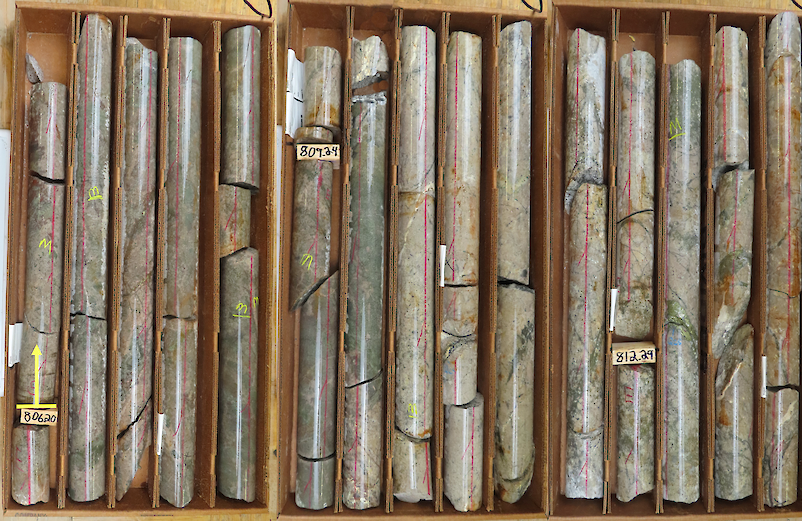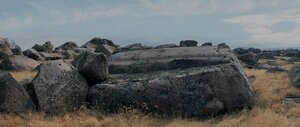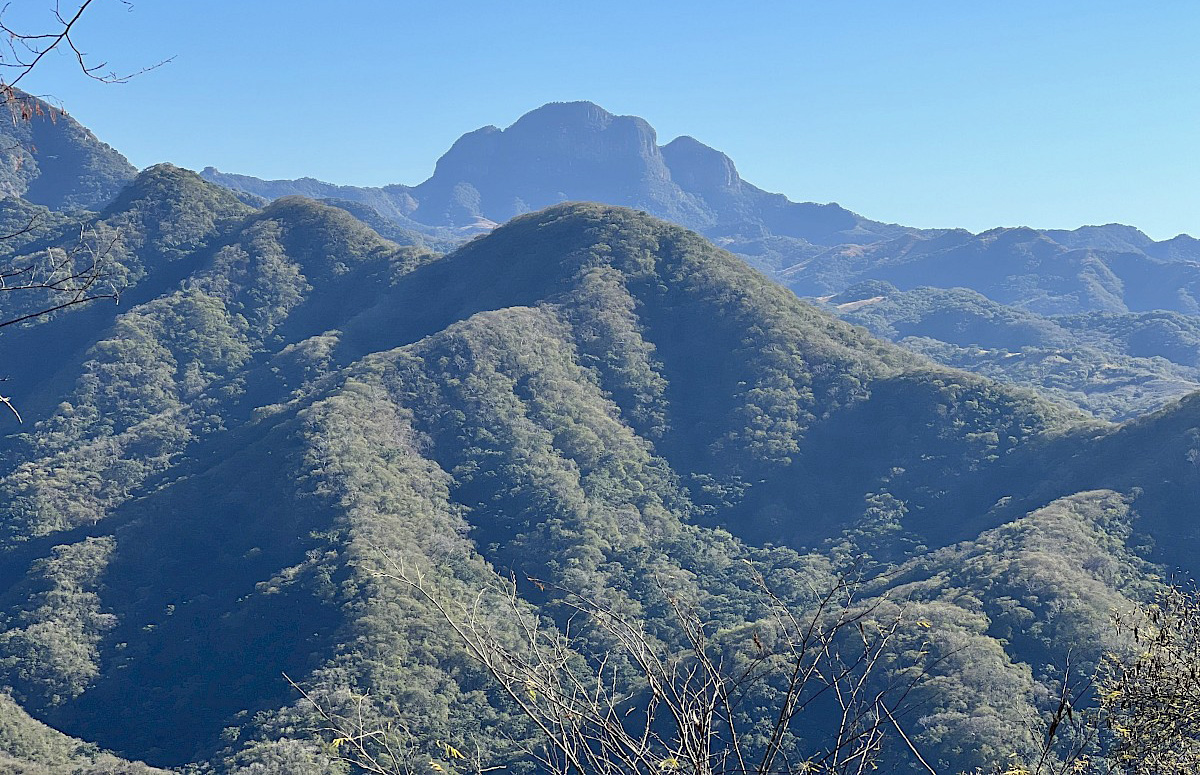TICKERS: , CNL; CGOOF, GWG; GWMGF, LAC, LN, NGC; NGPHF
Never Mistake Intelligence for a Bull Market: George Ireland
Interview
Source: Brian Sylvester of The Gold Report (4/9/12)
 George Ireland, portfolio manager with Boston-based Geologic Resource Partners, believes in seeing what he invests in and his passport bears witness: 80 countries visited in five years. From Africa to Argentina, from gold to lithium and graphite, he and his team seek out companies with experienced management, promising geology, good infrastructure and strong cash flow. Ireland shares his views on issues facing the mining industry in all corners of the world in this exclusive Gold Report interview.
George Ireland, portfolio manager with Boston-based Geologic Resource Partners, believes in seeing what he invests in and his passport bears witness: 80 countries visited in five years. From Africa to Argentina, from gold to lithium and graphite, he and his team seek out companies with experienced management, promising geology, good infrastructure and strong cash flow. Ireland shares his views on issues facing the mining industry in all corners of the world in this exclusive Gold Report interview.
George Ireland: Having grown up in a mining-oriented family, the dinner table conversations from an early age steeped me in the lore and intrigue of business. Based on that early interest, I have built up quite a book of relationships and a broad knowledge over the years, but I attribute a lot of the opportunities that have come my way to hard work and perseverance in an industry that was, for quite a long time, out of favor.
TGR: What wisdom did you pick up at the dinner table that you use today?
GI: One of the first things I learned was to see for yourself what you are investing in and who you are investing with. The second—and I give this advice to companies that we invest in and to other fund managers—is to talk to your investors, to the people who are giving you their faith and money.
TGR: Does that mean you make regular site visits to projects?
GI: My team and I have visited about 80 countries over the last five years.
TGR: What are your "must-sees" on a site visit?
GI: Typically, we are looking at the lay of the land: how the project sits in the political jurisdiction, the social environment, the environmental issues. We look at management, from the senior level down into the junior ranks. We want to know if they are capable of performing the work they are being asked to do. We look at the assets themselves, reviewing public information found in various documents such as NI 43-101s. We look extensively at the drill cores, site and plan maps and other data to assess the quality of work being performed with regards to our own assessment of value of the company.
TGR: Do you expect your clients to meet a certain annual performance threshold?
GI: We do not have a specific threshold. Our orientation is toward compensation and performance over the long term.
TGR: Would it be fair to say that you look for at least double-digit growth?
GI: Very definitely. Given the expected risks in the mining industry, our investors look to us for rates of return comparable to other venture capital or private equity businesses. We believe it is important to note that the mineral exploration business, much like the pharmaceutical or tech business, can create substantial growth of value through exploration and discovery. Our general focus is to capture those areas of growth, rather than the commodity trends.
TGR: What is your time horizon?
GI: Our investment horizons typically stretch from two to five years. We focus on a firm's capabilities and ability to grow, not its latest drill or production results.
TGR: Are you concerned that equities have trailed the underlying commodity, especially in the precious metal side, for close to 18 months?
GI: The market trends are changing. We are now seeing the precious metal mining companies being valued using similar metrics to other mining companies, whereas historically they traded at a substantial premium. We believe this is both a natural evolution of the market and a direct result of the widespread acceptance of the metal exchange-traded funds (ETFs) like SPDR Gold Shares (GLD:NYSE.A). On a smaller scale, we see a lot of opportunity in exploration and development companies. Fortunately for us and unfortunately for them, these companies are having trouble getting financed, which means we can pick and choose among the assets that interest us.
TGR: Are you paying more attention now to things like infrastructure?
GI: Infrastructure has always been a critical component of mining investment. Our approach always includes taking into account all the necessary factors for a mining situation to be developed. The infrastructure demands of a mining project and how they will be financed are always crucial factors in deciding to invest in any remote mining situation.
TGR: Are most of your positions private placements or do you buy positions in the market?
GI: We do both.
TGR: In terms of your private placements, how important is a warrant?
GI: Not critical, although we like warrants. We particularly like financings that are elegantly structured, meaning the warrants are tied to the company's financing needs rather than an unrelated timeframe.
For example, if a company is raising money for a drill program it expects to complete in 15 months, we like to see that the warrants are tied to the completion of that program so they can be used to fund the next stage of exploration and development.
A big problem for many junior companies is the potential dilution caused by a large number of warrants outstanding with no implicit or explicit linkage to the cash requirements of the company.
TGR: Can you give us an example of a recent private placement you did versus the market price for the company involved, without naming a specific company?
GI: Typically, private placement terms are on the higher end of the historic band for discounts, namely 10–15% off a recent weighted-average price, as opposed to 5–10%.
TGR: Are you looking for companies offering a dividend?
GI: Absolutely. As a long-term investment fund, our focus is on total return to our investors. That comes through both capital appreciation and dividends.
TGR: Does that mean you are looking beyond companies in the exploration and development stage and into mid-tier and top-tier producers?
GI: Yes, we invest in companies in all phases of the mining sector. We utilize our judgment to decide which companies are the most appealing based on projected risk-weighted rate of return. In practice, that means you would not expect the same returns in lower risk senior producers compared to higher risk explorers once you remove the issue of the movement of the underlying commodity price. As for capital reinvestment and dividends, it is logical to expect that smaller, more rapidly growing companies would be less likely to pay a dividend than their more senior competitors.
TGR: Has your asset base moved from companies with market caps less than $200 million to larger companies, given that more of them are offering dividends than they used to?
GI: For us, dividends by themselves are not a driver; they are part of the total return on a particular investment. What causes us to change the portfolio in one direction or another is where we see the best prospect for total return relative to the level of risk inherent to an investment. It all depends on our view of the potential return on an individual company, not a particular segment of the business.
TGR: Would you be willing to name some of the dividend-issuing companies you hold?
GI: We hold names such as Barrick Gold Corp. (ABX:TSX; ABX:NYSE) and Goldcorp Inc. (G:TSX; GG:NYSE), to name two of the larger ones in the gold sector. Outside of the gold business, we hold Cliffs Natural Resources Inc. (CLF:NYSE) and Cameco Corp. (CCO:TSX; CCJ:NYSE), for example.
TGR: What are your strategies for playing ETFs?
GI: Our strategy for metal and metal stock ETFs is to look at relative return in the metal versus the equities.
For example, we hold platinum and palladium ETFs because we like the outlook for the metal, but we do not like the outlook for most of the companies, particularly those operating in Southern Africa and Russia.
TGR: Without naming companies, what have you seen on site visits that made you decide not to invest?
GI: Our site review process has uncovered everything from operational issues related to the geology or the quality of the drilling to engineering challenges associated with site layout or metallurgy. There may be infrastructure issues related to access to the project or, more importantly, shipping routes away from the project. Political and economic issues in the region or country can also come up. And finally, site visits allow us a better chance to see the quality of management in their "home" as opposed to being in a nice office or boardroom.
TGR: Brent Cook has suggested that there are too few people properly trained in preliminary economic assessments (PEA) and prefeasibility studies (PFS), leaving untrained people to plug numbers into models that cannot be relied on to predict whether a project can be mined. If you agree, what are some common errors retail investors should look for that might raise a red flag?
GI: We are deeply committed to doing onsite due diligence as we want to be able to make our own assessments of the numbers being used in the PEAs or PFSs being prepared. That said, it is important for retail (and institutional) investors to read and understand these documents for what they are: namely, preliminary estimates. If I had to characterize the most common area for error at this stage, it would be the assessment of the geology of the deposit and how it relates to the calculation of resourses and reserves.
Concurrently, the investor needs to understand how the economic numbers were calculated, particularly such things as metallurgical recoveries and costs such as the cost of electricity, fuel, labor and metals prices.
Investors need to understand the upside case, and more importantly, the downside case.
TGR: What are some of the common problems you see on site visits?
GI: One general theme is the lack of trained staff and labor, ranging from engineers and geologists to skilled operators and trades people. This continues to be a big problem worldwide.
The second would be the uncertainty associated with legal title and the project investment climate. This includes the tax rates or ownership structures being imposed by host countries.
The third is the temptation to use advanced technology where it is not completely understood or is being misapplied. Too often, this leads to failure or poor performance.
TGR: Once financed and in production a lot of mines fail to meet production targets. A management change soon follows. Is this a result of some of those factors?
GI: Very much so. It is the combination of, first, the expectations of the original group not being met and, second, not having the depth of experience to understand and correct for all the variables. It is no surprise to see issues come forward that were not anticipated in the feasibility studies. An axiom that one of my analyst partners loves to use is "there has never been a failed mine without a positive feasibility study."
TGR: I like that. Can you tell us about some of your recent site visits?
GI: My team and I have recently been to the Democratic Republic of the Congo (DRC) to visit Banro Corporation (BAA:TSX; BAA:NYSE) and Loncor Resources Inc. (LON:NYSE.A; LN:TSX.V). I recently visited Continental Gold Ltd. (CNL:TSX) and other companies in Colombia. I also visited a number of non-precious metal names, including Lithium Americas Corp. (LAC:TSX; LHMAF:OTCQX) in Argentina. In the rare earth space, I visited Great Western Minerals Group Ltd. (GWG:TSX.V; GWMGF:OTCQX) in South Africa, where I just joined the board.
TGR: In South Africa, calls to nationalize more of the mining industry are growing. Why?
GI: South Africa is not alone. It seems that 80–90% of the countries around the world want more of the patrimony to be shared with the government and the citizens.
The history and economic ramifications of apartheid influenced the move for local ownership in South Africa. There also are labor/management conflicts over wages and profit sharing. We believe the South African political outlook has declined substantially over the last five years.
However, South Africa is not alone. In 2010, the Australian government sought a very large tax increase on the mining sector. The U.S. Environmental Protection Agency has taken actions relative to the coal industry.
TGR: Let's go into more detail on your African visits. Banro recently chose a debt financing over equity financing. What are your thoughts on that?
GI: It was entirely appropriate, given the cash generation capability of its Twangiza project and the relatively accelerated development at Namoya, its number-two project. Banro looked at the cost of capital of equity, convertible debt and straight debt and decided the debt issue was the best alternative.
TGR: You have seen Namoya firsthand. What do you think?
GI: When I visited approximately 18 months ago, I was very impressed. Namoya has a relatively easy physical layout to build, a good operating environment in terms of climate and, relative to Africa, ease of access.
TGR: Banro has a position in Loncor, is that right?
GI: Yes. Many of Banro's early exploration team members were shifted to Loncor to develop exploration projects in North Kivu. As North and South Kivu became safer to explore, we noted their success with the Banro projects and wanted to invest with them.
TGR: Loncor has an agreement with Newmont Mining Corp. (NEM:NYSE) on its Makapela project, a high-grade gold deposit in North Kivu. Geologically speaking, can it be a mine?
GI: We believe so. The drilling is very early stage. There are two development options. One would be a larger, lower-grade, open-pit development. We are interested in the second option, a higher grade underground mine. It would have lower capital costs and be easier and faster to bring into production.
TGR: What are your thoughts on Peter Cowley and the management team?
GI: My teammates and I have known Peter for a number of years and have a lot of respect for the job he and his team have done. On our site visits, we have been pleased with the work being carried out under their direction. As a non-technical factor, we have been very pleased with the training programs that Loncor is offering its Congolese employees and the care being taken to build social relationships locally through their charitable foundation.
TGR: Many people consider the DRC to be the riskiest district in Africa. But the geology is irresistible. How do you balance those two considerations?
GI: High risk/high potential return is the mantra. While we believe that a number of assets in DRC that offer potentially returns to investors, the risk associated with each one must be closely scrutinized. For us, one of the key risks comes back to the question of whom we are investing with. In the case of Banro and Loncor, we believe the team, from the board down to the men with feet on the ground, has experience and relationships in the DRC to develop profitable mines with social and environmental sensitivity.
TGR: You visited Continental Gold's Buriticá Project in Colombia. What can you tell us about that?
GI: We began investing in Colombia a number of years ago, principally in the private company that evolved into Continental Gold. We initially saw Colombia as a regional play, just opening up for exploration and systematically underexplored by modern standards.
Developing Buriticá as the company's chief asset with the Berlin asset in second place struck us as a very good strategy. We like the high-grade ore reserves at Buriticá and the very high probability that it will be an underground mine using bulk tonnage mining methods. This approach should cause the project to have a relatively small footprint on the surface environment, which eases permitting and causes less social disruption.
TGR: Ari Sussman is the CEO of Continental Gold as well as the executive chairman of Colossus Minerals Inc. (CSI:TSX; COLUF:OTCQX). Is this a management team you follow?
GI: We also invest in Colossus, and, yes, Ari has attracted strong people. We are particularly impressed with Sussman's ability to build up management teams with people as they are needed at each stage: exploration, development, construction, production.
In our evaluations, we ask how well management is prepared to transition itself in terms of its skill set as the company grows in value and as it develops its assets. That is one of the major risks in any kind of venture capital or private equity business.
TGR: What are your investment themes for non-precious metals equities?
GI: One of our major themes is in what we call "green metals," metals that will benefit from the environmental issues associated with global warming and climate change. An example is the lithium/graphite complex.
Lithium Americas is one of the most advanced brines project in South America, producing lithium using brine technology and solar evaporation—a very low-cost production method. We expect it to be among the first to market, in relatively due course.
And because lithium batteries utilize graphite in their anodes, we started to look at graphite producers. One of the most intriguing projects is Northern Graphite Corp.'s (NGC:TSX; NGPHF:OTCQX) Bissett Creek in Northern Ontario. The management team has the right combination of geologic, mining and marketing smarts. We became a cornerstone investor.
TGR: You have done well; since August Northern Graphite's share price probably rose about 300%.
GI: There is an old adage, "never mistake intelligence for a bull market."
TGR: So, is it a bit too frothy right now?
GI: It depends on your view for graphite. We fundamentally believe in the green metal theme and have decided that the lithium/graphite complex will be a winning technology.
If you believe market penetration for electric vehicles will be in the 3–4% range over the next 5–10 years, graphite prices will have a lot of upside. If you believe in market penetration rates of 10–15%, graphite prices will have to be that much higher in order to bring out the amount of material needed.
TGR: As an institutional investor, can you offer any wisdom to retail investors wondering if they should stay in the mining equity space?
GI: The generic advice to any investor in any business is to know what you are investing in. Know whom you are investing with. Do your homework.
Structure your investments appropriately relative to your risk profile. That is essential for institutional or individual investors in this high-risk, potentially high-return sector.
TGR: George, thank you for your time and your insights.
George Ireland founded Geologic Resource Partners LLC in 2004 and serves as its chief investment officer and managing member. He serves as portfolio manager of the associated Geologic Resource Funds and has been president of GRI Holdings LLC since June 2000. Ireland has 30 years of experience in all aspects of the resource sector, ranging from field geology to banking and venture capital.
Want to read more exclusive Gold Report interviews like this? Sign up for our free e-newsletter, and you'll learn when new articles have been published. To see a list of recent interviews with industry analysts and commentators, visit our Exclusive Interviews page.
DISCLOSURE:
1) Brian Sylvester of The Gold Report conducted this interview. He personally and/or his family own shares of the following companies mentioned in this interview: None.
2) The following companies mentioned in the interview are sponsors of The Gold Report: Goldcorp Inc., Banro Corp., Loncor Resources Inc., Continental Gold Ltd., Lithium Americas Corp., Northern Graphite Corp. and Colossus Minerals Inc. Streetwise Reports does not accept stock in exchange for services.
3) From time to time, Streetwise Reports LLC and its directors, officers, employees or members of their families, as well as persons interviewed for articles on the site, may have a long or short position in securities mentioned and may make purchases and/or sales of those securities in the open market or otherwise.



































